The Desert Botanical Garden in Phoenix is open again after being closed for most of 2020 because of COVID 19, and we are grateful to have it back. The last time it was closed to the public was 1942 because of World War II, and I think many of us can think of similarities between that occasion and the 2020 pandemic.
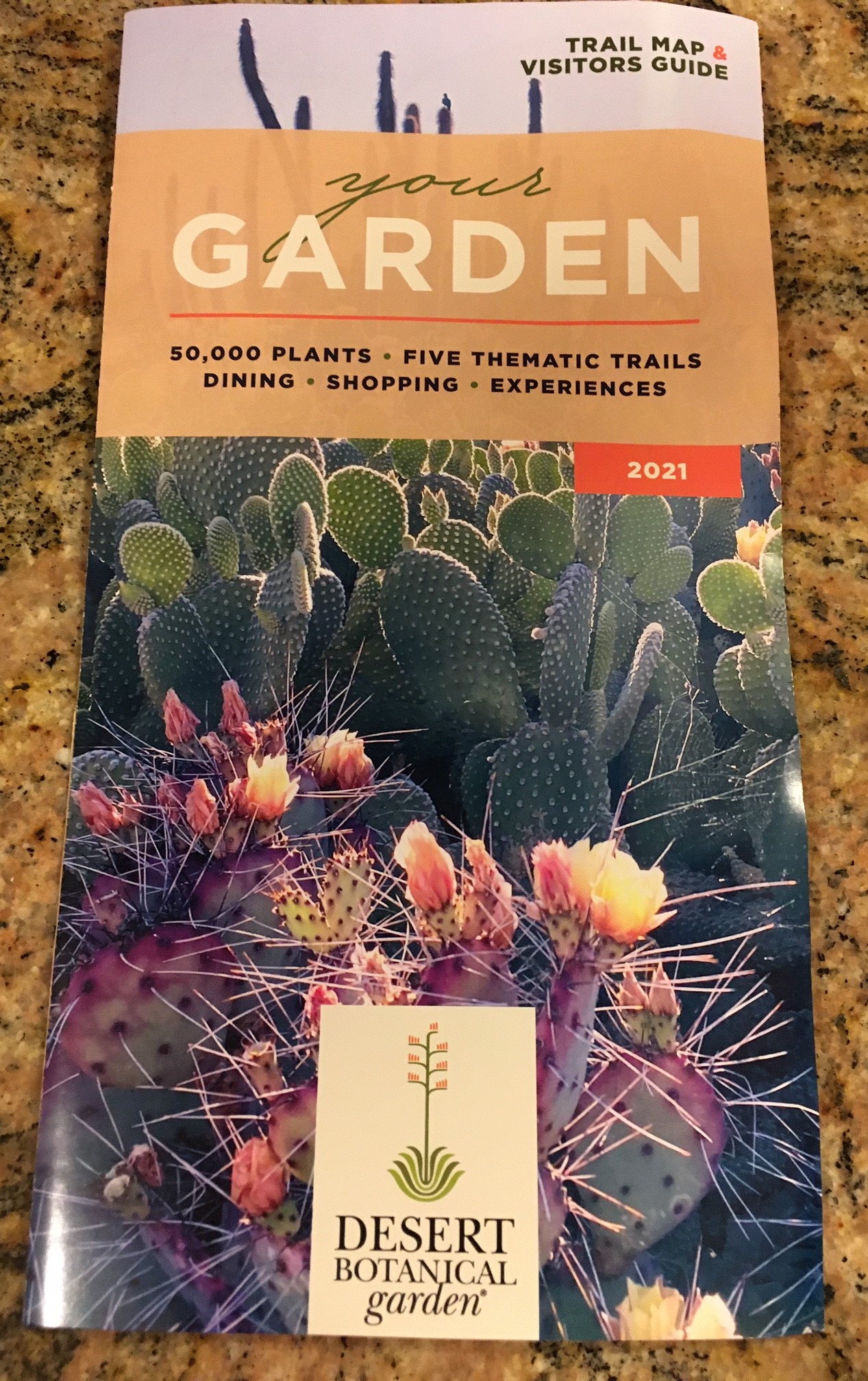
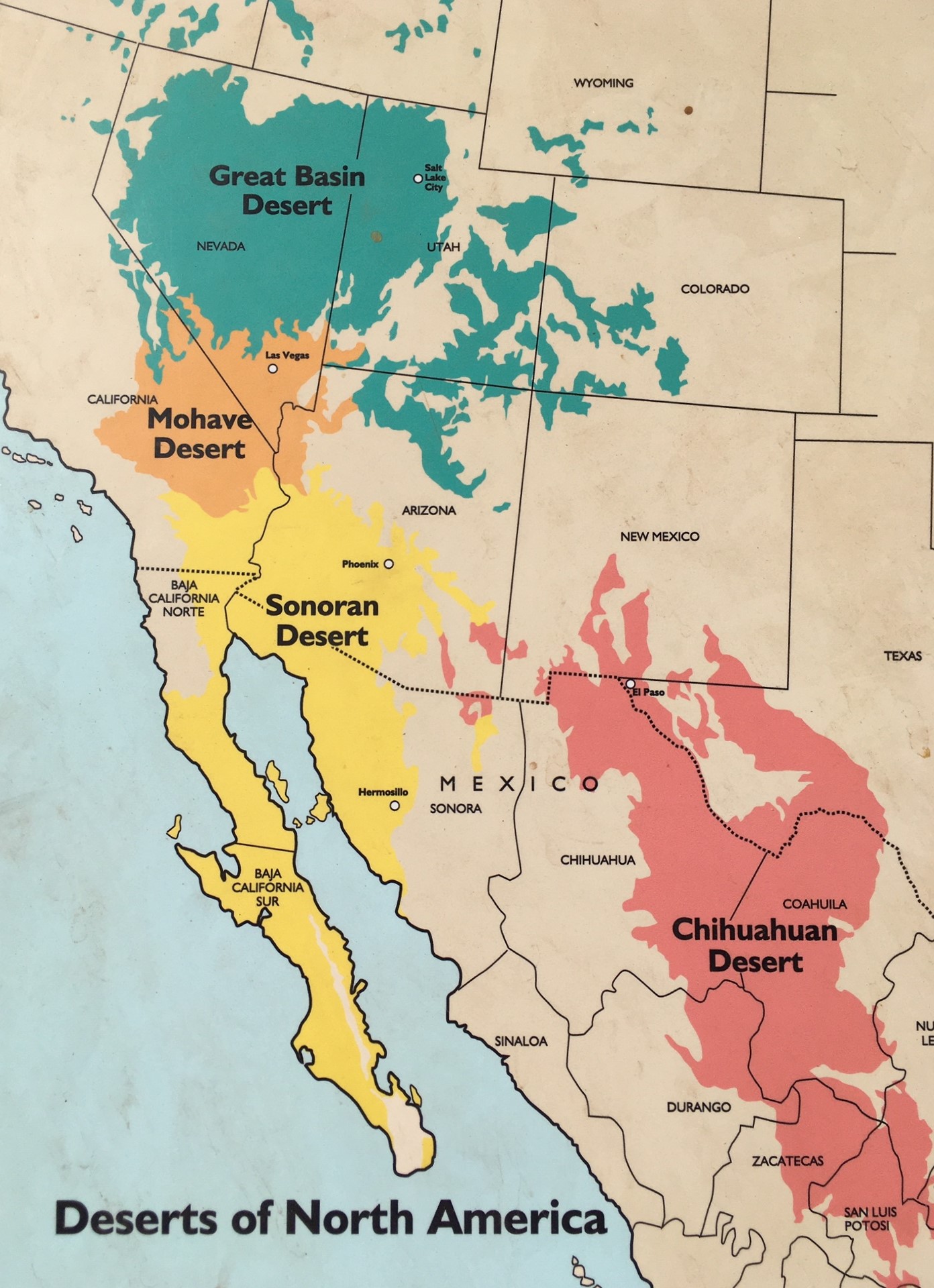
The Botanical Garden comprises 55 acres in southern Phoenix, accessed by the Galvin Parkway, which was built in 1963, allowing direct access by the public for the first time. The Gardens were started in 1939 by a group of local citizens who wanted to preserve and protect the desert environment. Led by Swedish botanist Gustaf Starck, they secured land and began collecting and preserving native specimens from 4 “local” desert areas.
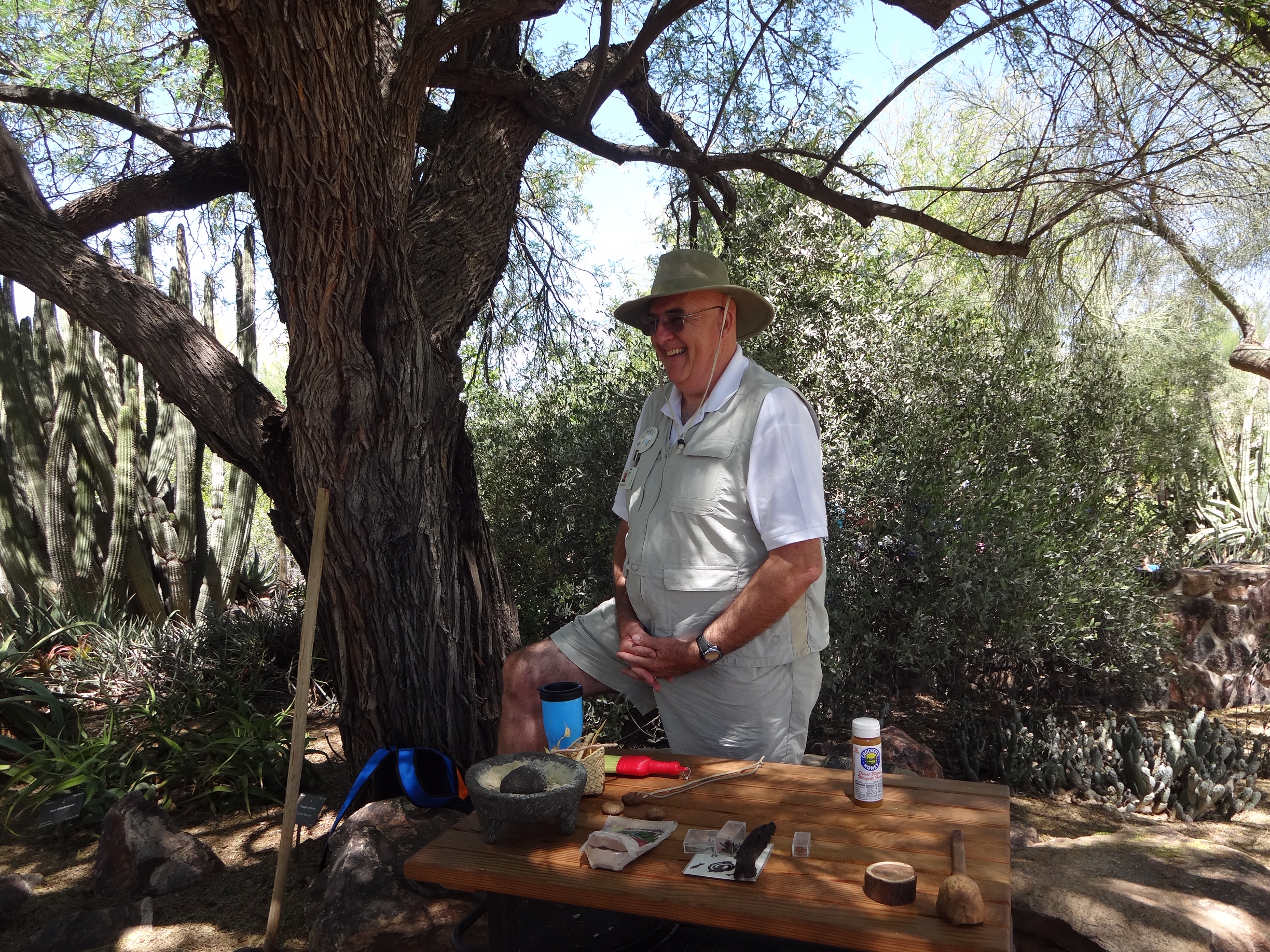
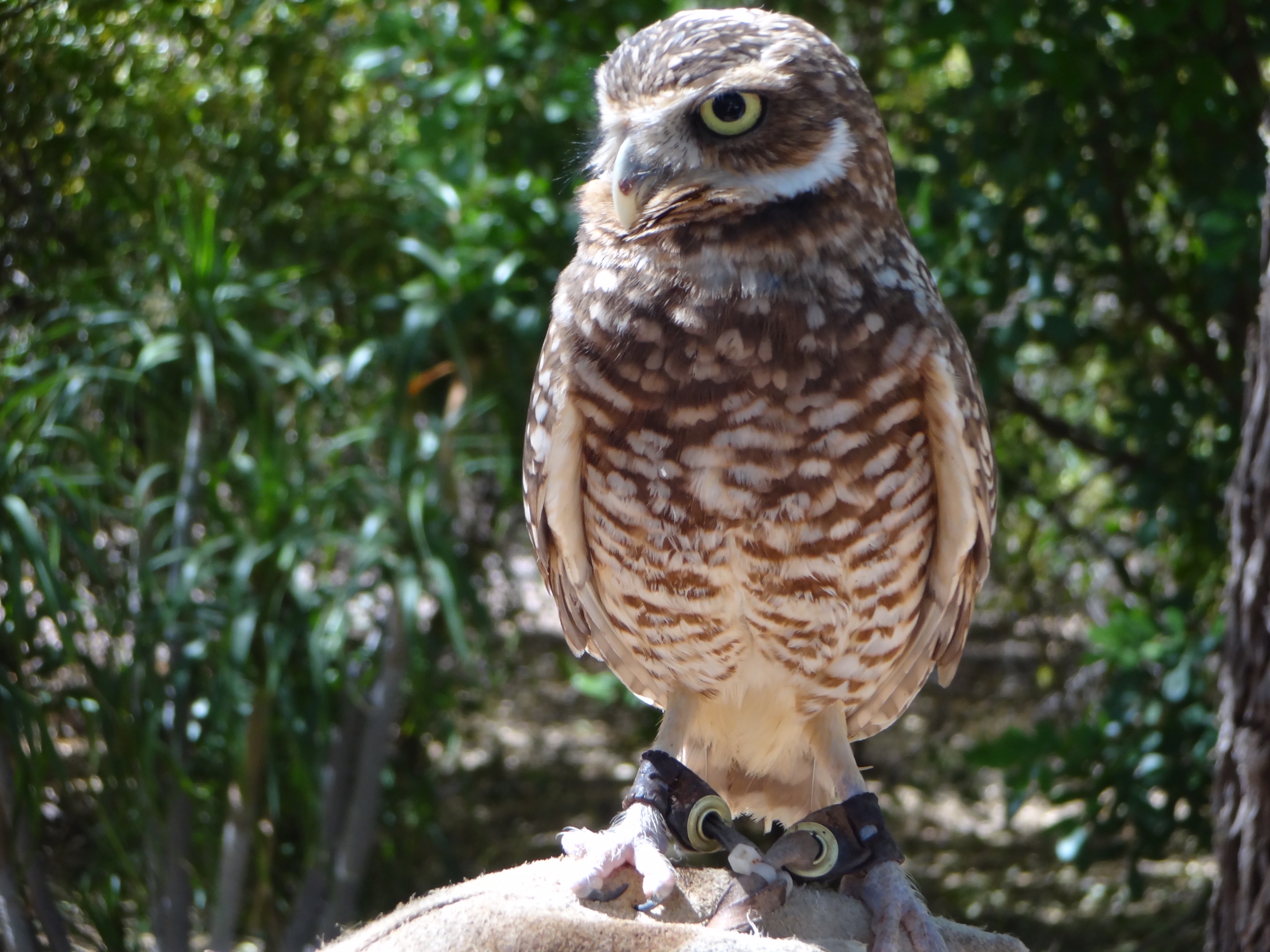

In 1977, the Docent Program began, providing guided tours and information stations to the public. Because of the docent program, visitors can not only get their questions answered, but can often meet close up some of the native animals of the area. In 1983, the Gardens were accredited by the American Association of Museums, an honor enjoyed by less than 30 other botanical gardens. Then in 1985, the Desert Botanical Garden became a charter member of the Center for Plant Conservation in the U.S.
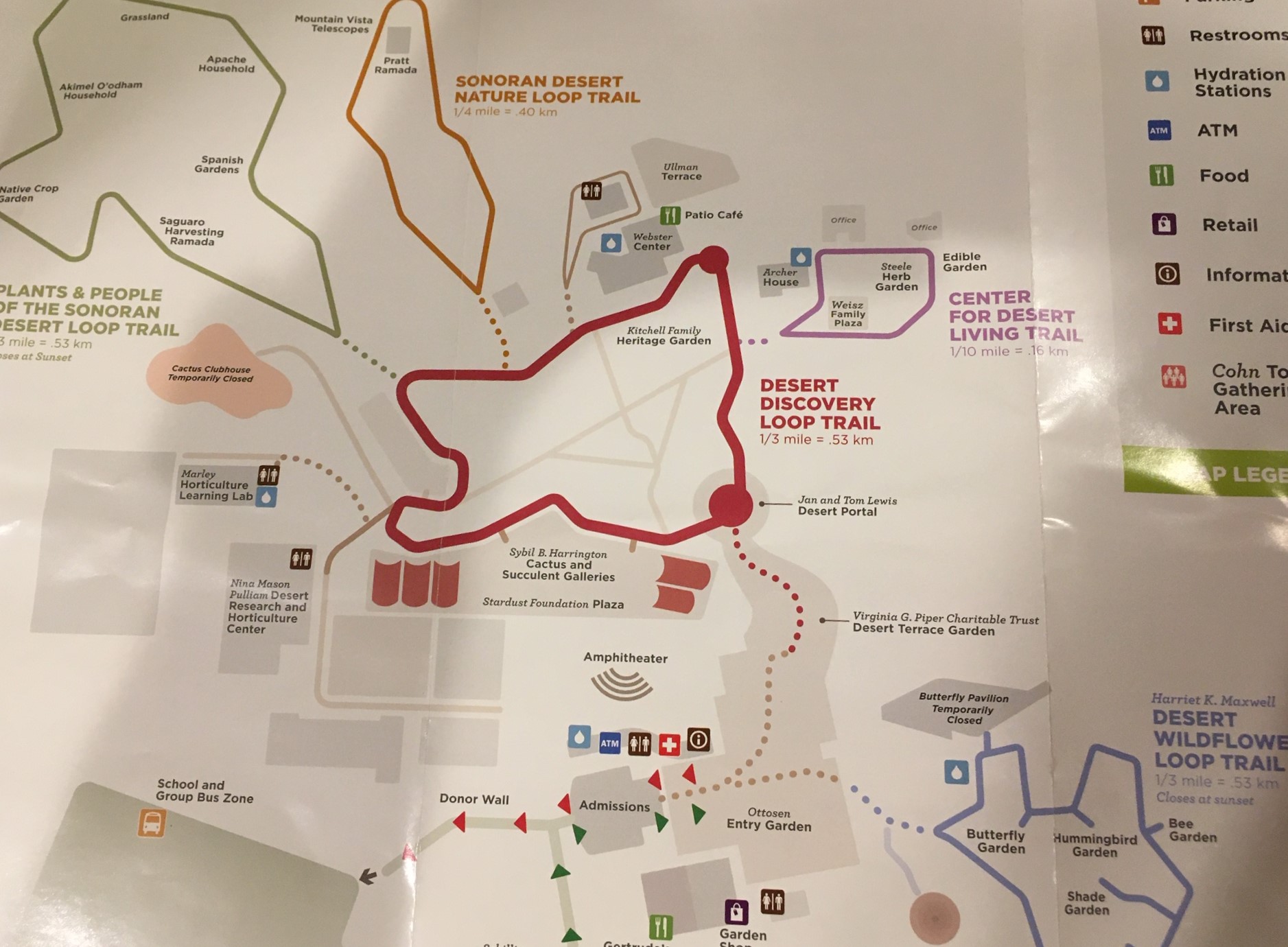
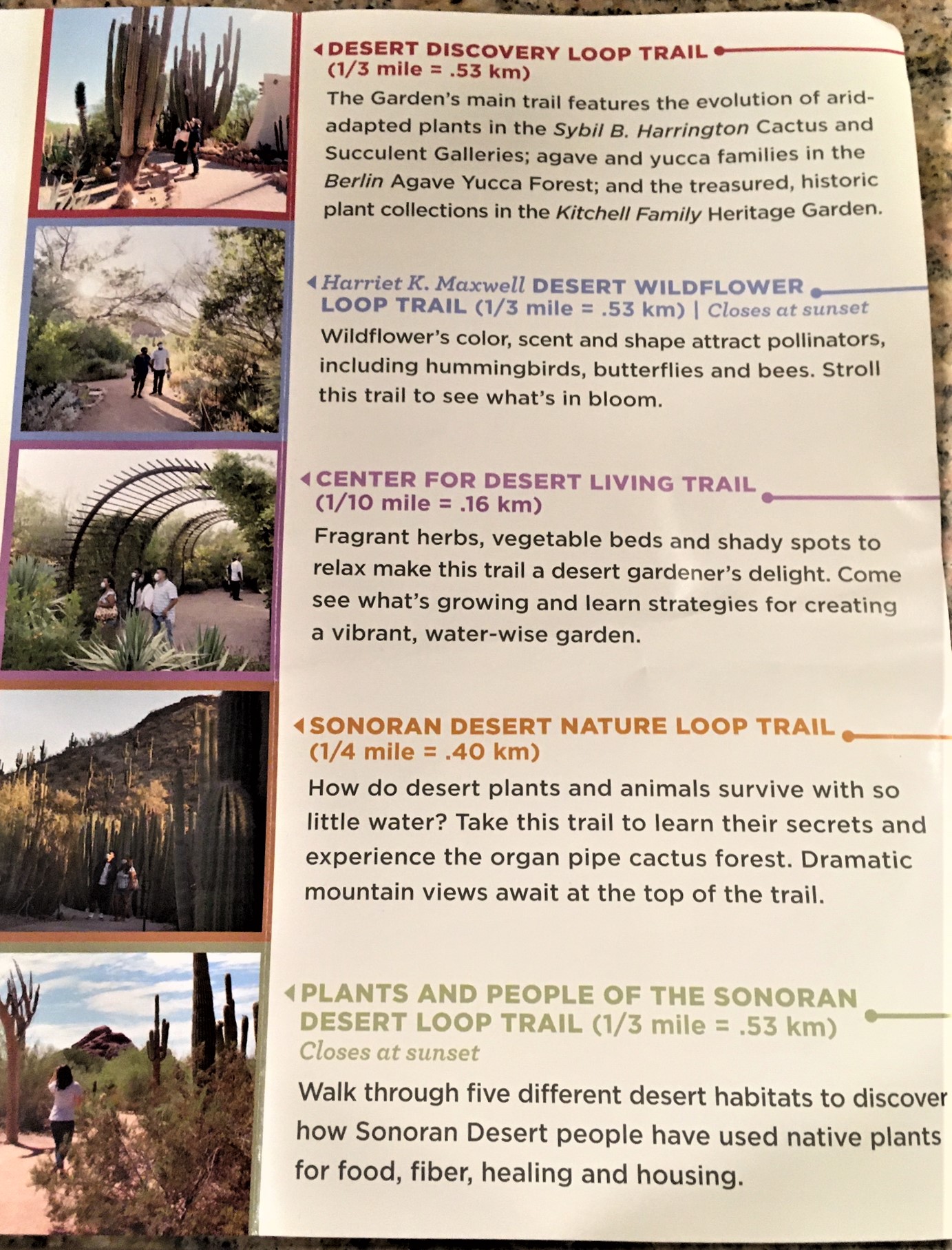
The Desert Botanical Gardens’ living collection consists of 25,000 plus plants representing over one hundred plant families. Behind the scenes at the 85,000 square foot Hazel Hare Center for Plant Science, workers grow new plants and take care of 400 rare, threatened or endangered desert varieties. They also maintain a seed bank, consisting of frozen seed and pollen from the rarest plants.
Since its beginning, the Gardens have continued to enhance and improve the ways in which they achieve their dual missions of conservation and education. 2002 saw the completion of a huge $17 million dollar expansion, and there have been many other additions and improvements since then. The Gardens now are divided into 5 major areas or trails, including a Plants and People of the Sonoran Desert which shows how some of the native people used the plants they found here.
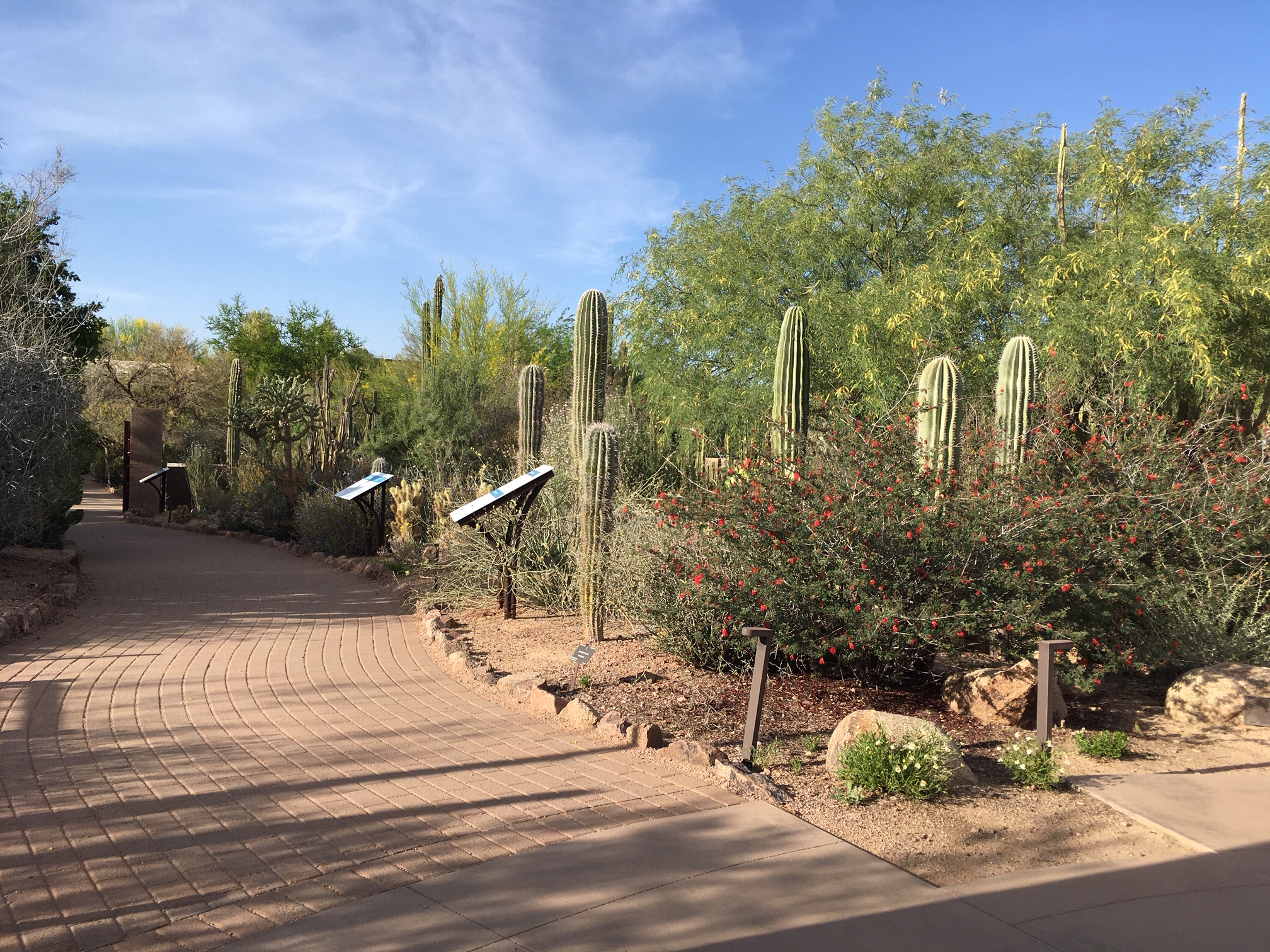
The paths wind through the gardens, giving a variety of vistas. One small garden features plants which attract butterflies, and another group of plantings is enticing to hummingbirds. Some areas display cacti and aloe in all shapes and sizes. My friend, Barbara Renner, and I were there in early April, so the wildflowers were plentiful. Almost every cactus had buds, and some were blooming.
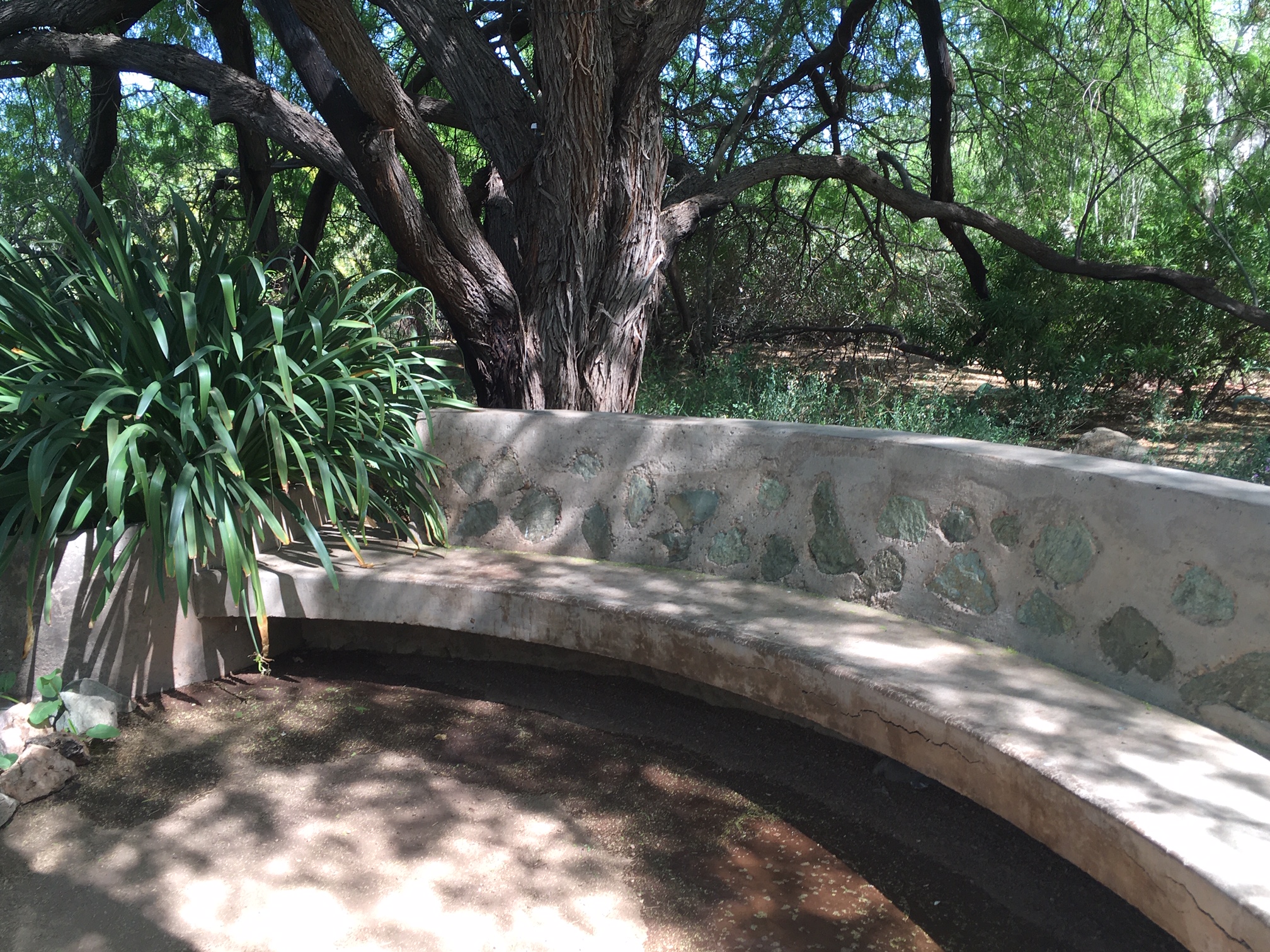
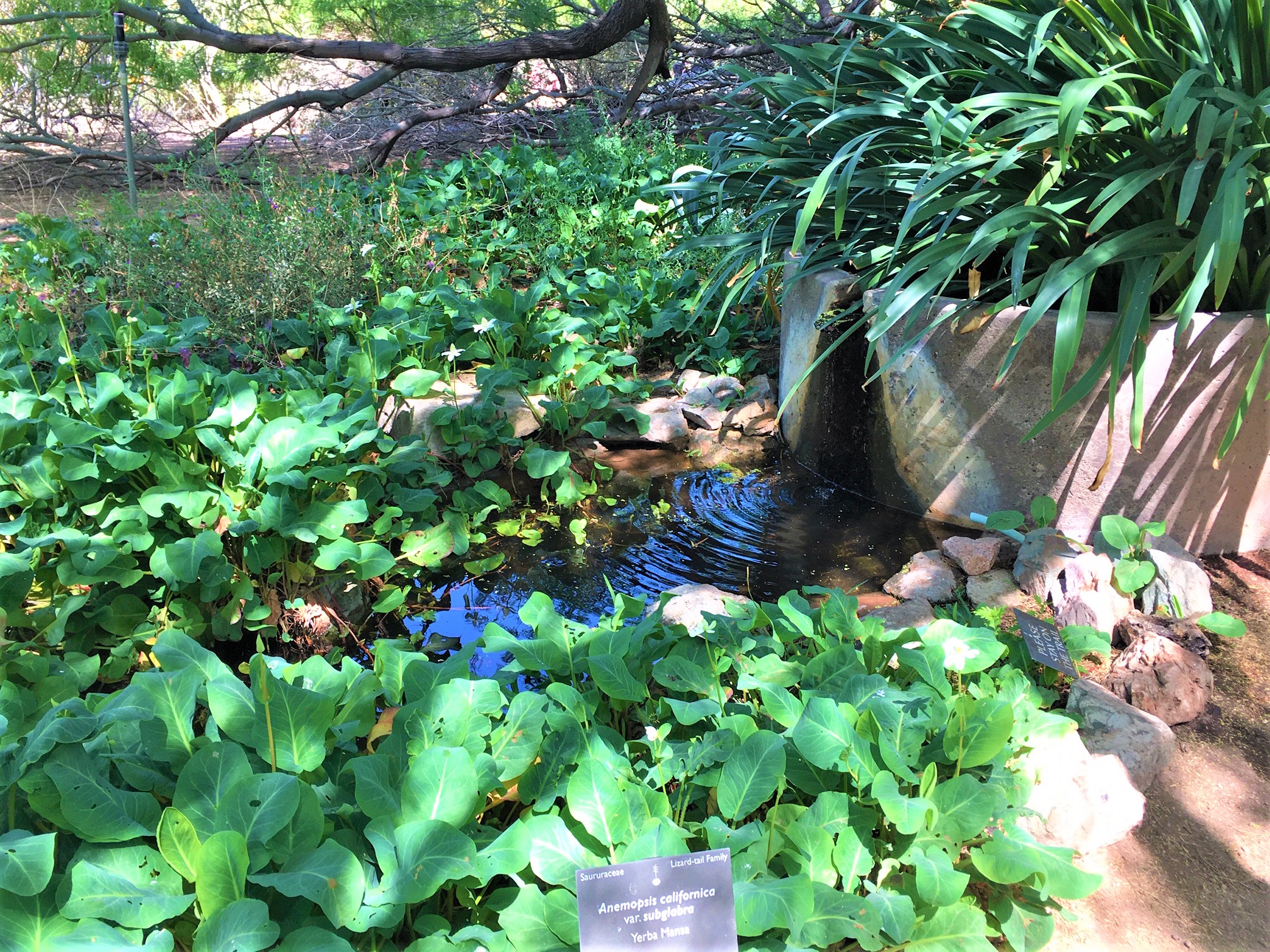
The designers of the Botanical Gardens were mindful of the Arizona sun which can be warm even in winter. Desert trees provide shade, and along the trails there are places sit, relax, and enjoy a different perspective.
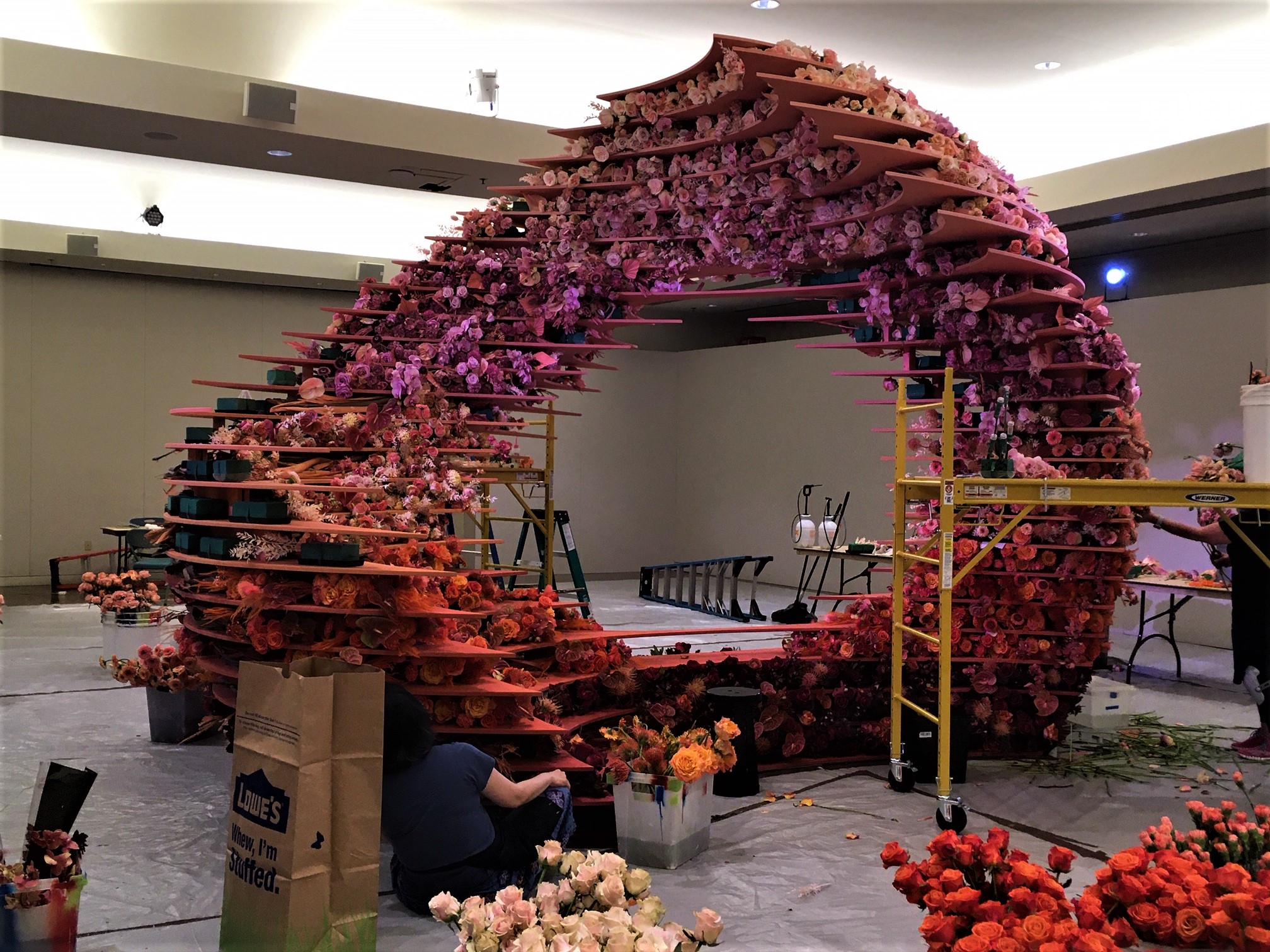
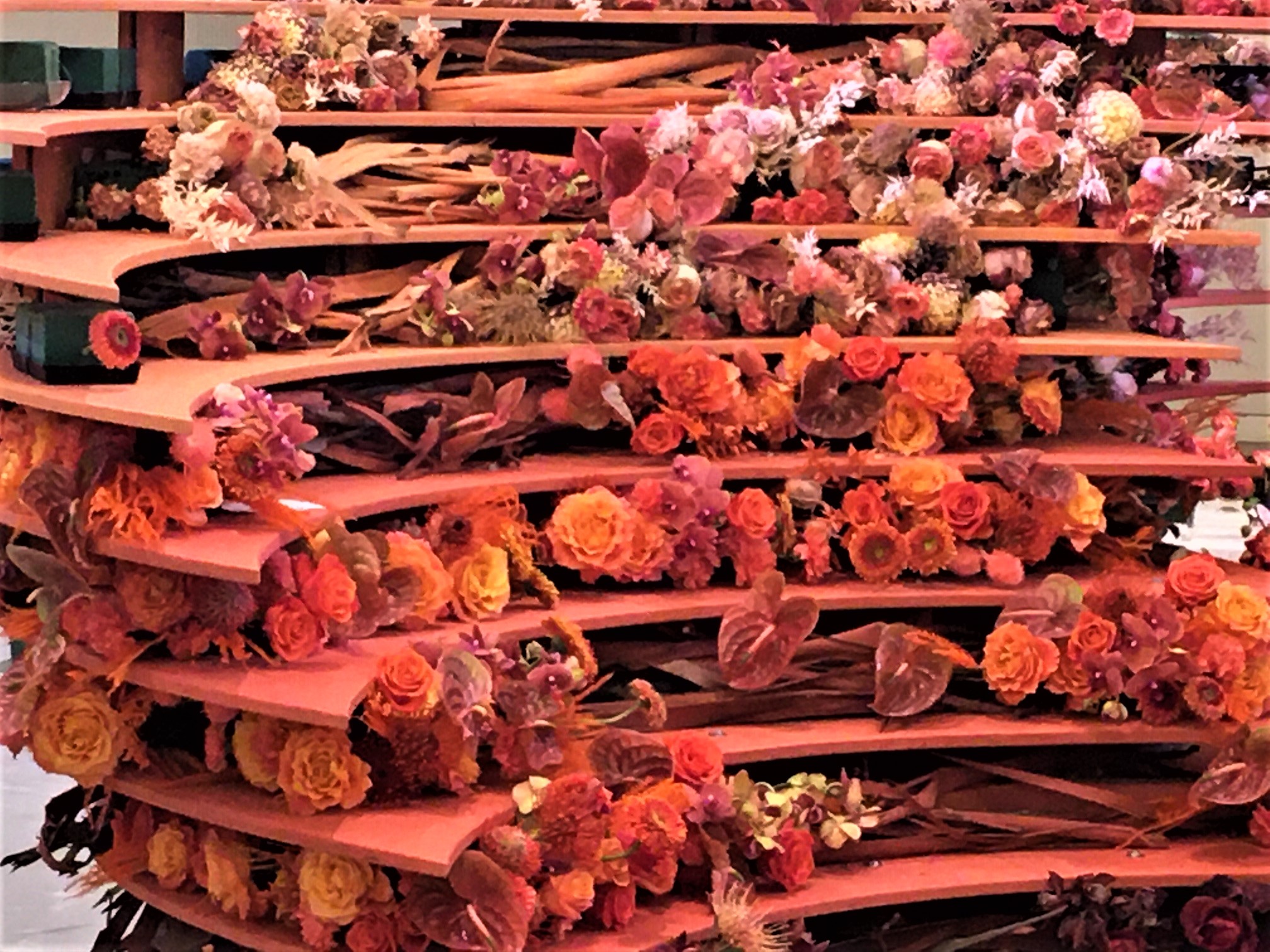
Several air conditioned buildings around the Garden are designed to house plant-related displays. When Barb and I were there, we were able to see the final segment of a three-part floral display of Wind, Water and Earth. We were fortunate enough to be there when the staff was refurbishing the Earth display, the creation of Natasha Lisitsa and Daniel Schultz of the Waterlily Pond Studio.
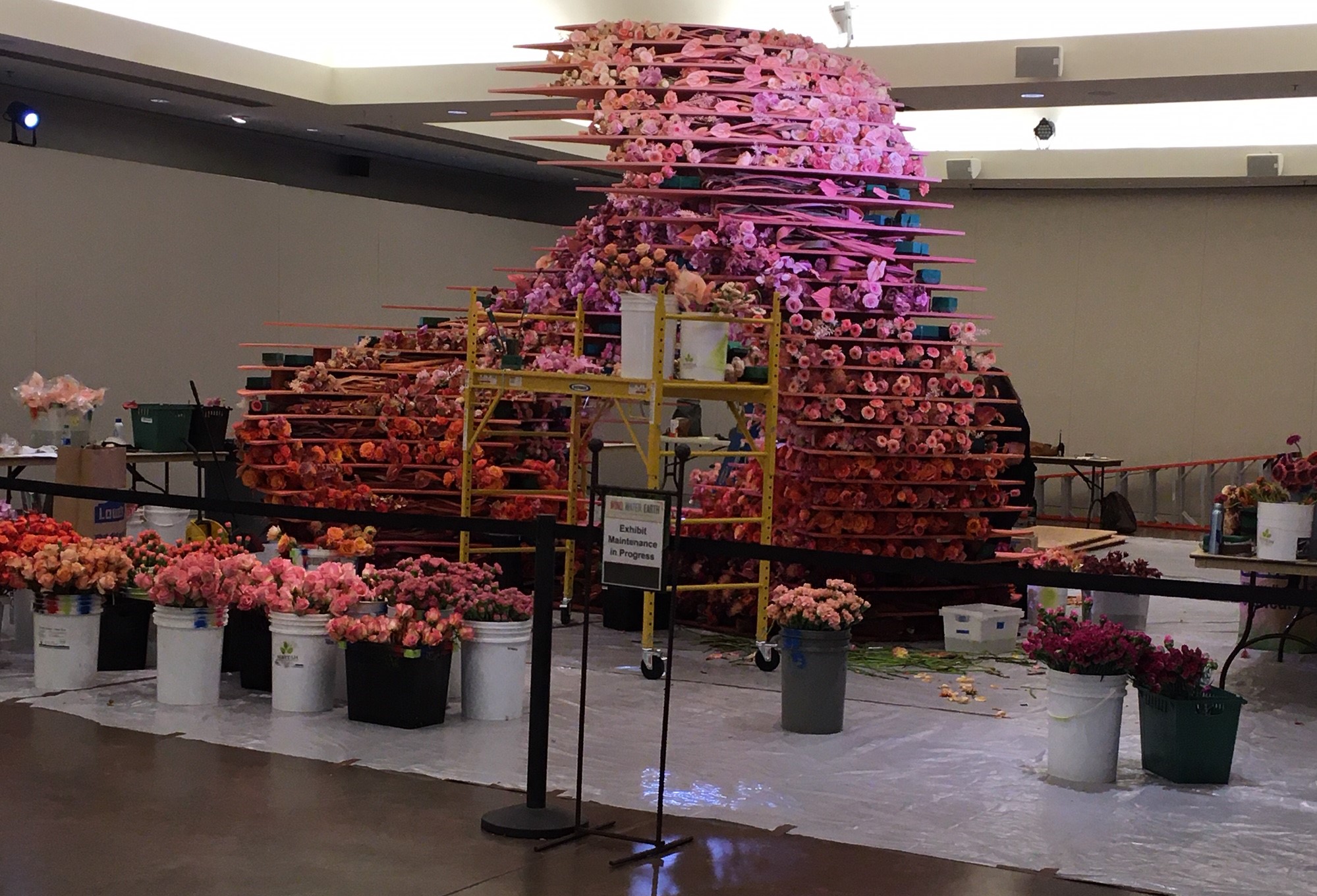
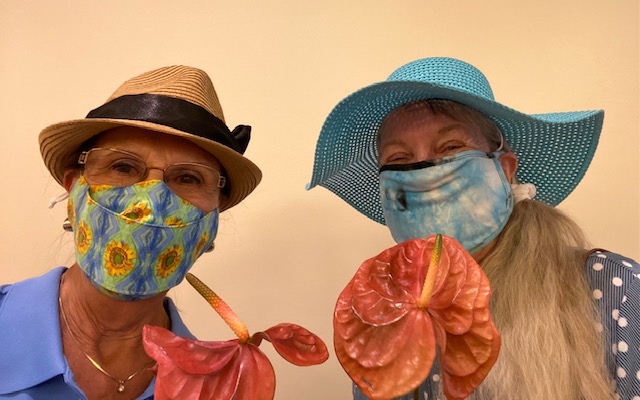
The display is a 3D sculpture of twenty-four wooden layers to represent the different strata of the earth. 10,000 fresh flowers are used to imitate the color variations in the layers of local sandstone and to suggest the way the setting sun reflects on those layers, highlighting the range from pink to rose to red to orange to burnt sienna which is typical of our spectacular Arizona sunsets.
One of the staff members came over to answer our questions and explained that they would replace the flowers one more time before the display ended. She also pointed out the clever ways that other vegetation had been added within the layers to hold the flowers in place. I asked about the anthuriums, usually native to Hawaii, and Barb and I were gifted with a flower.
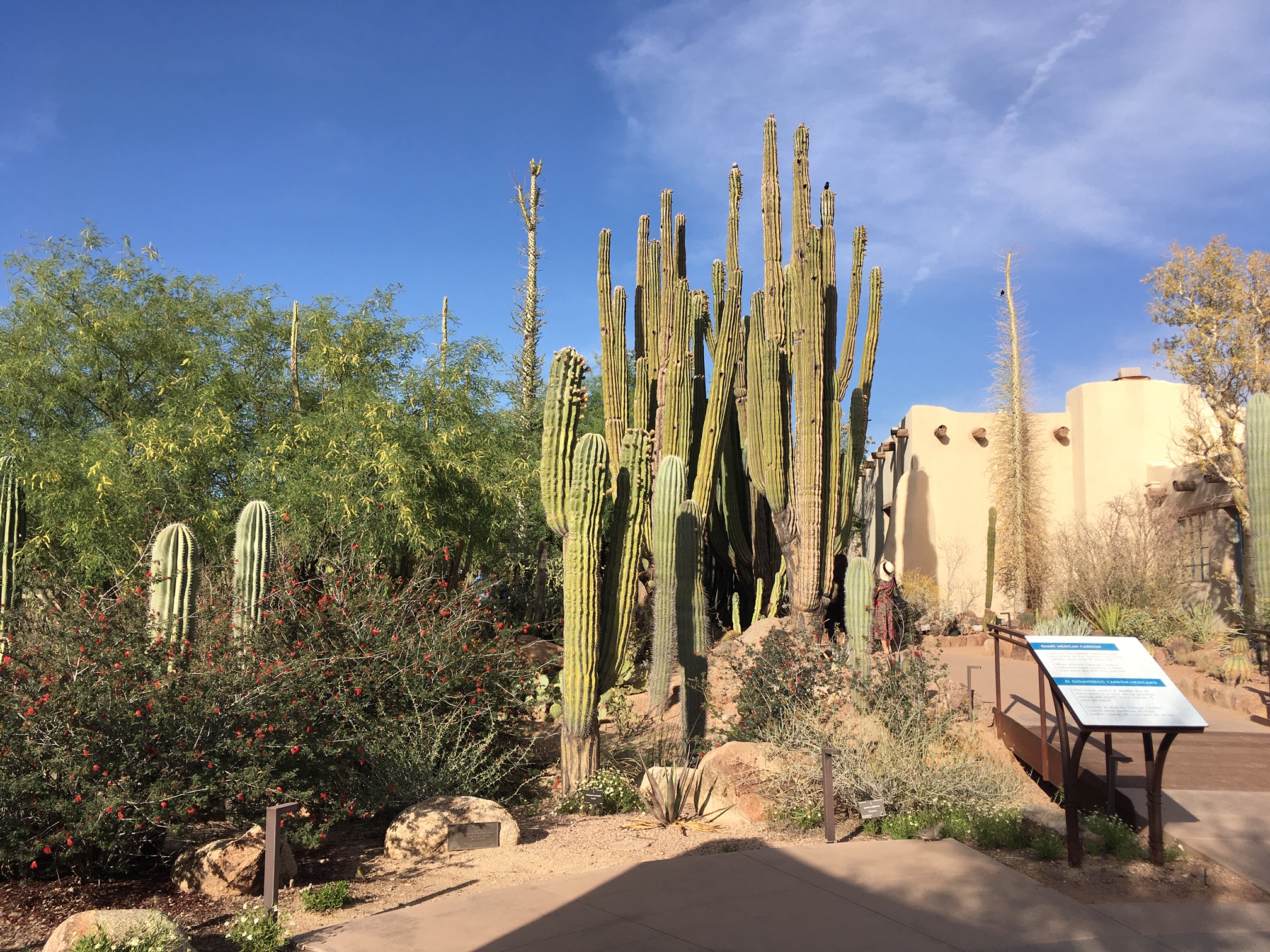
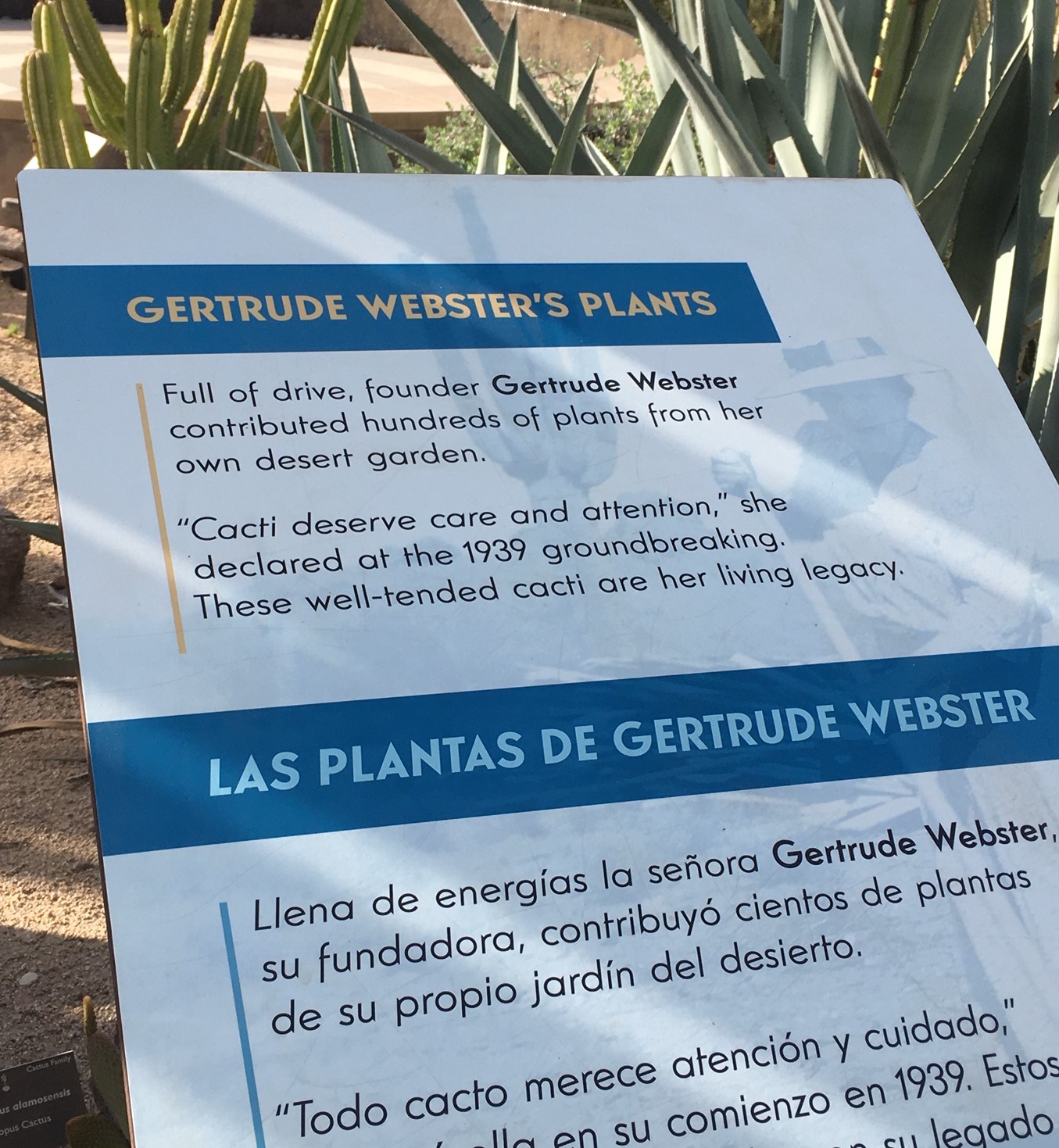
If you get tired of admiring the plants in the garden, there are lots of other things to do. Gertrude Divine Webster was one of the founding members of the Desert Botanical Gardens in 1939. When she died in 1947, she left her estate to support the garden. The main restaurant is named Gertrude’s in her honor.
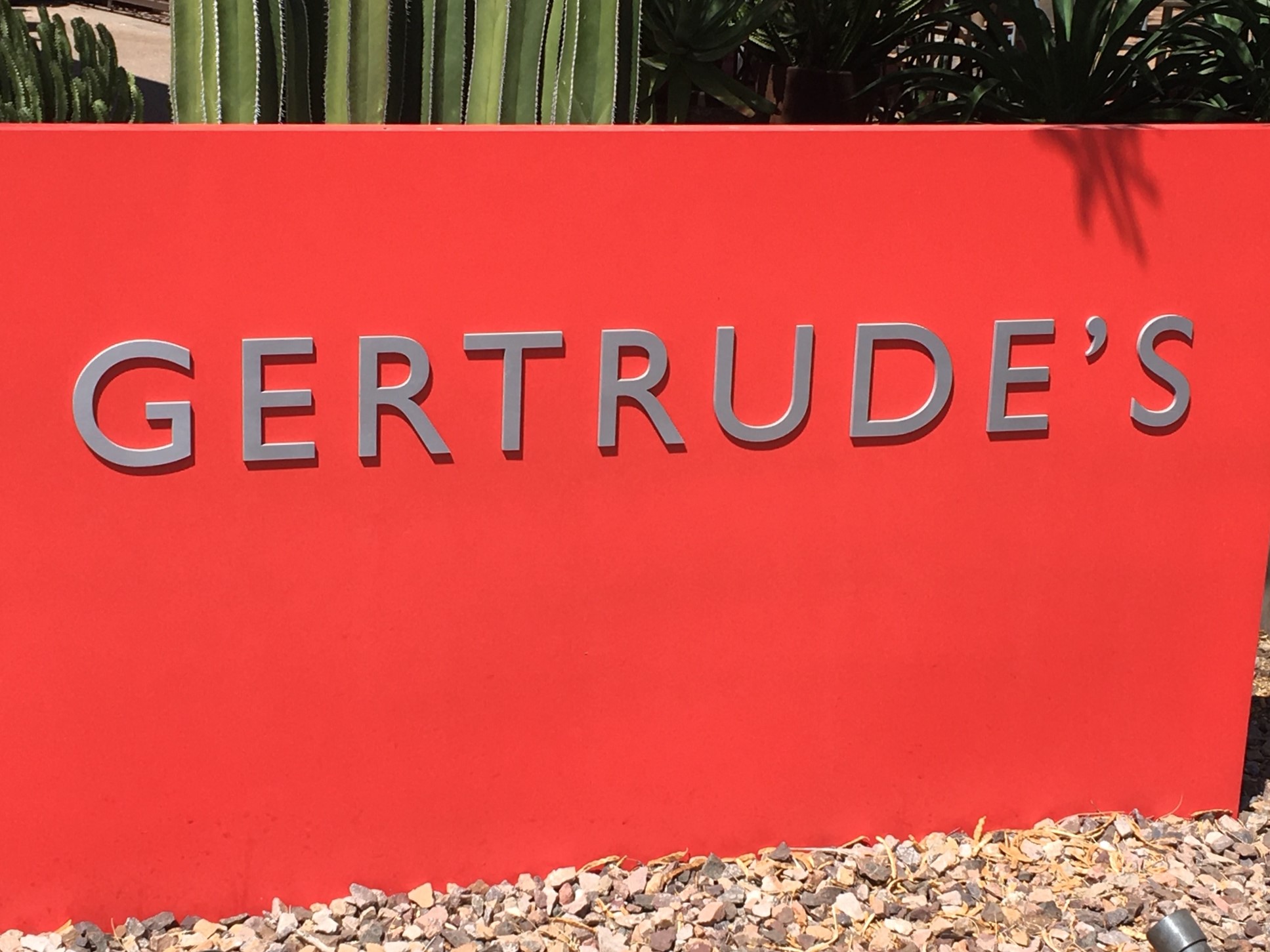
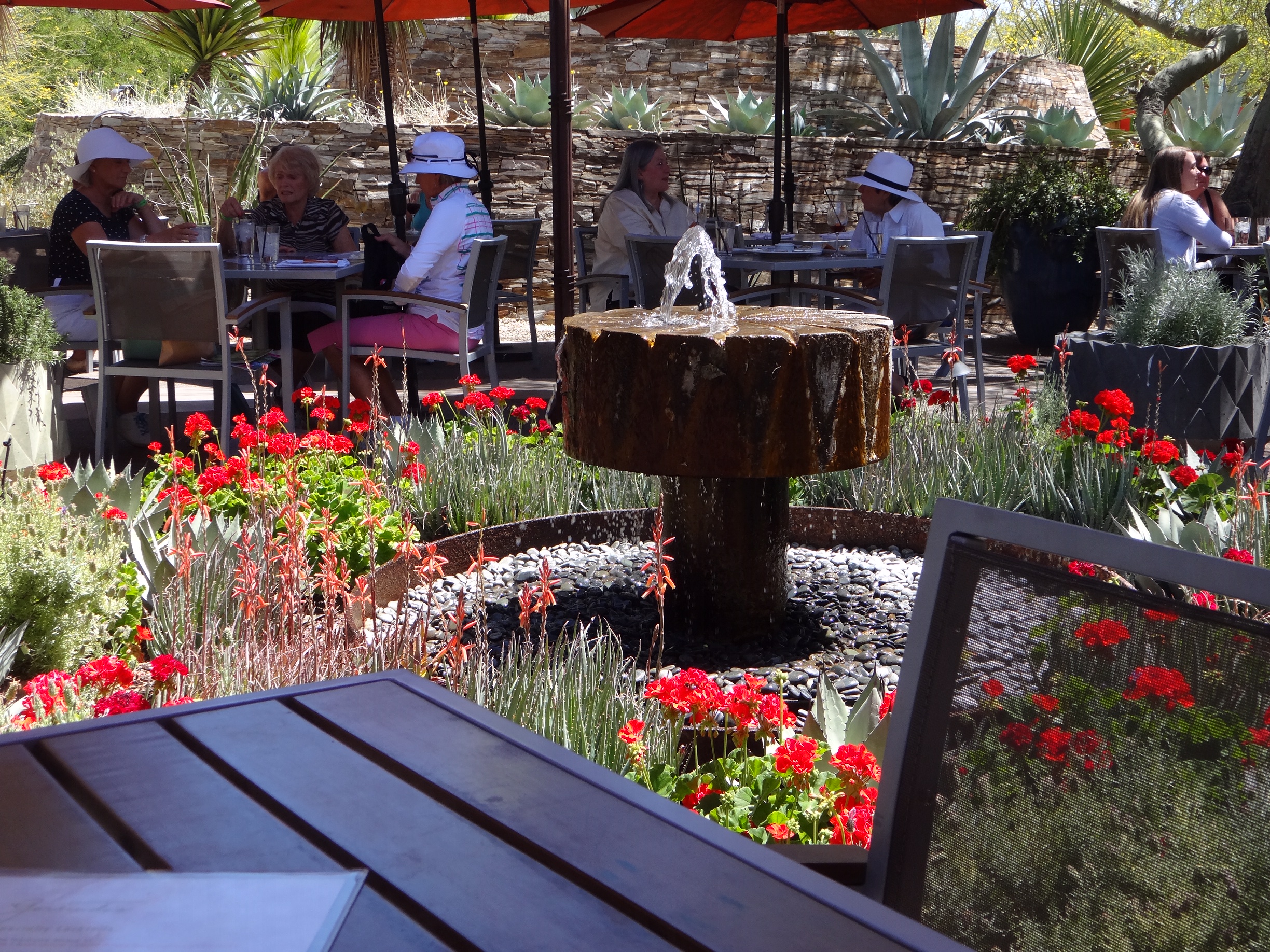
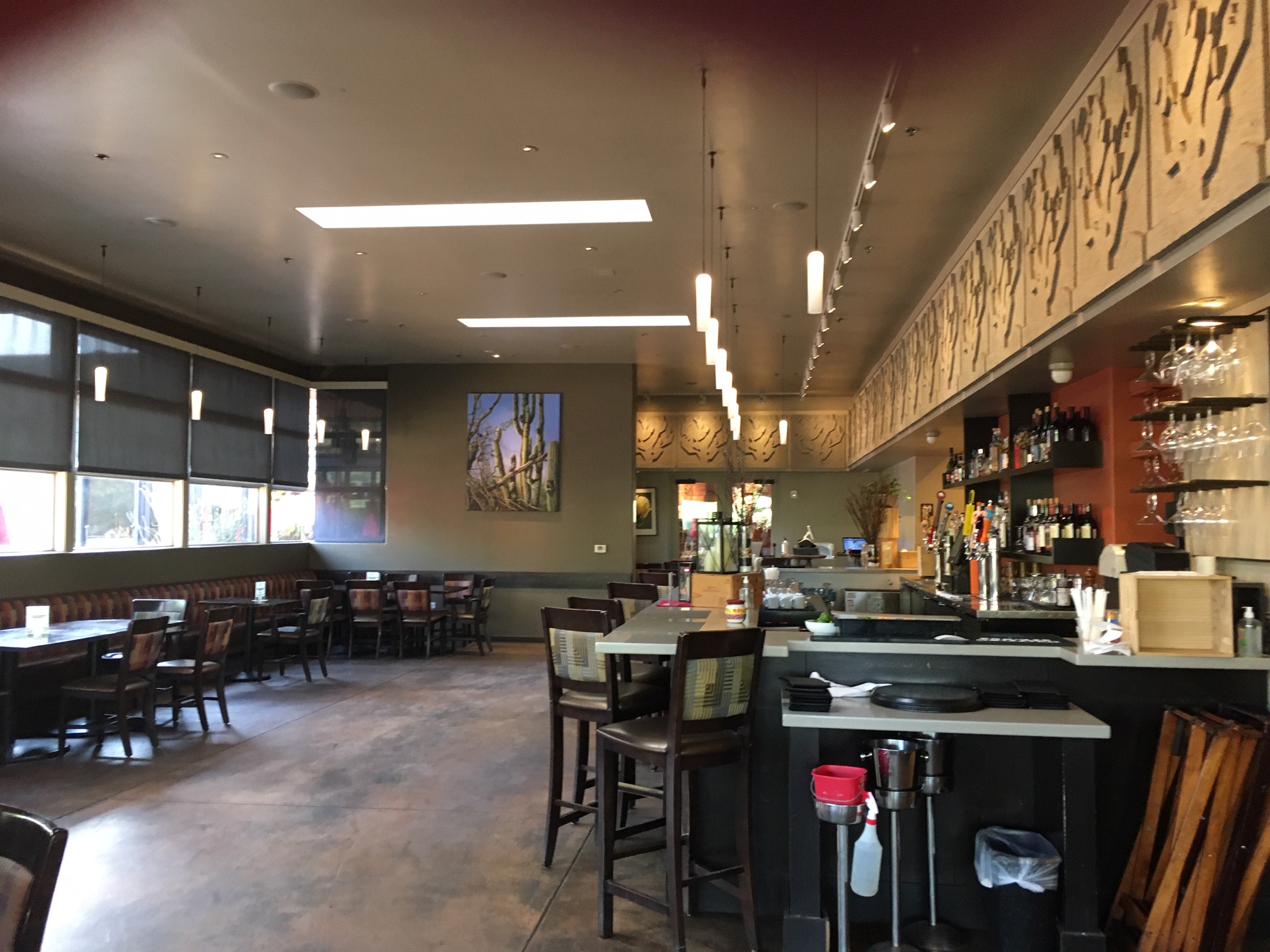
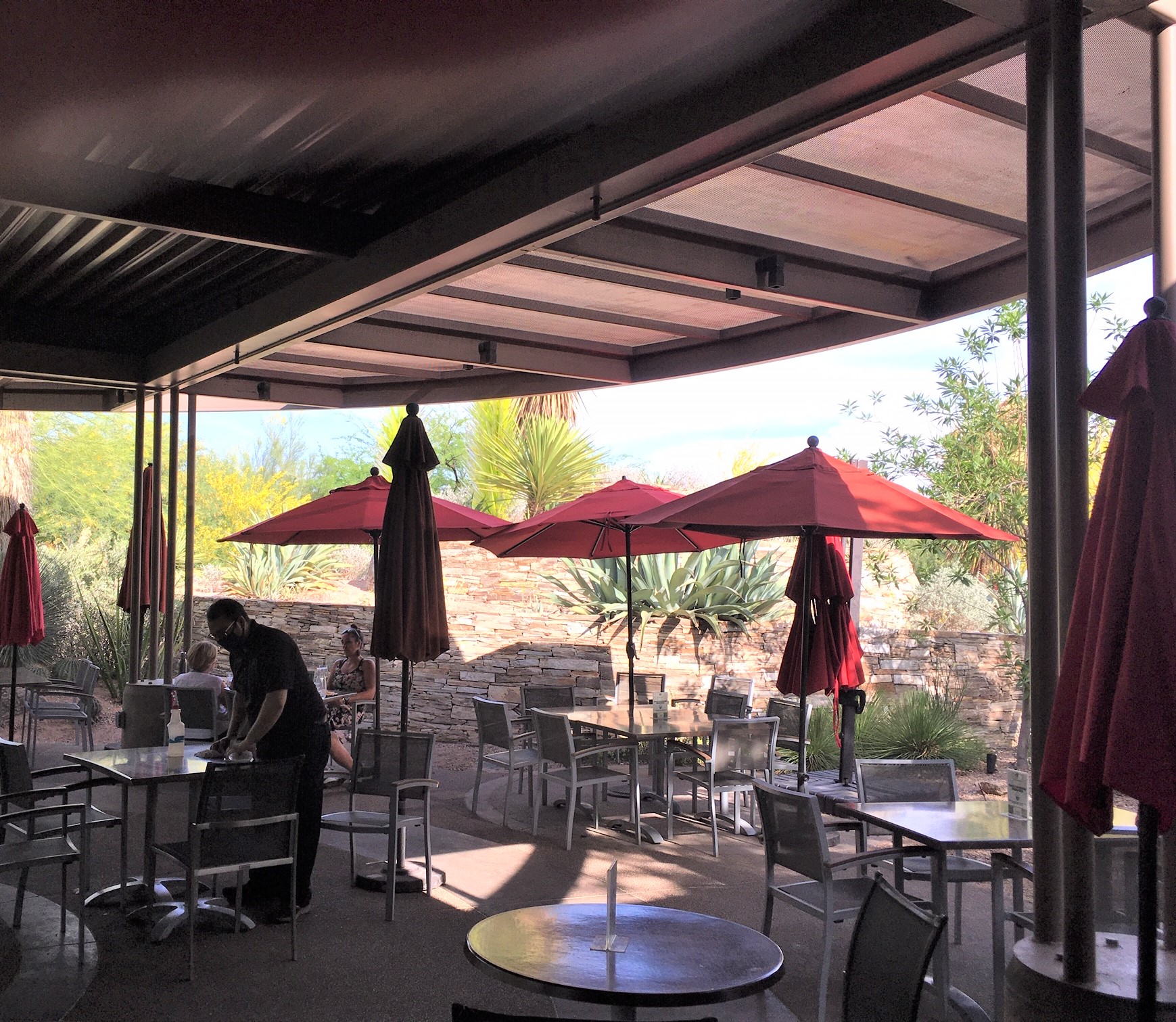
Gertrude’s usually is open for breakfast, lunch and dinner, and the food is both healthy and delicious. You can eat inside or outside, and they also have a full bar. Barb and I stopped for iced tea about half way through our afternoon, and then came back for dinner and a well-earned glass of wine. That night, we split the Boar Posole (super delicious) and a fresh salmon salad. I’ve had their hamburger and their steak salad before – and other friends have loved their entrees too. Go online and check out the menu – it is unique and yummy.
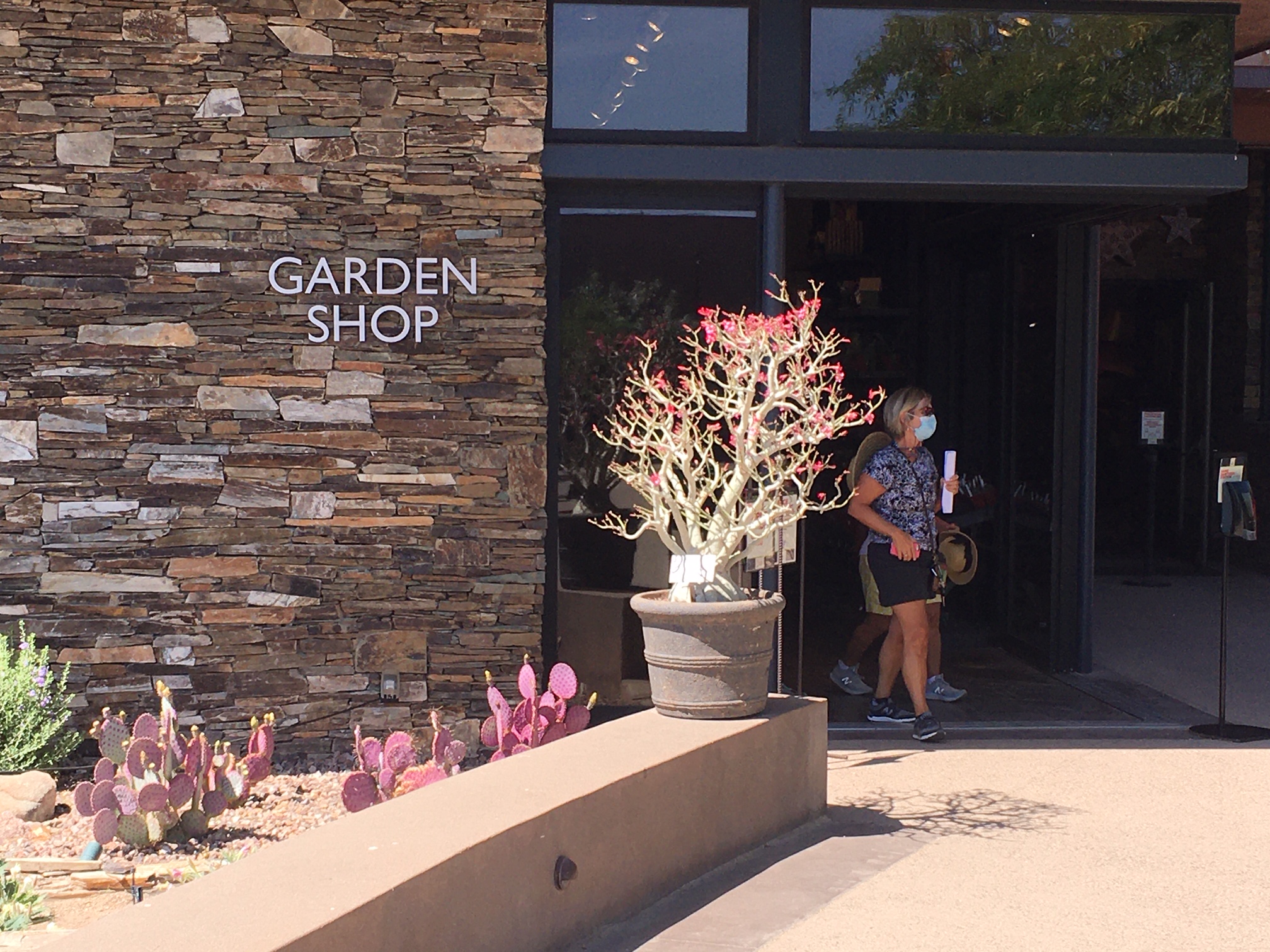
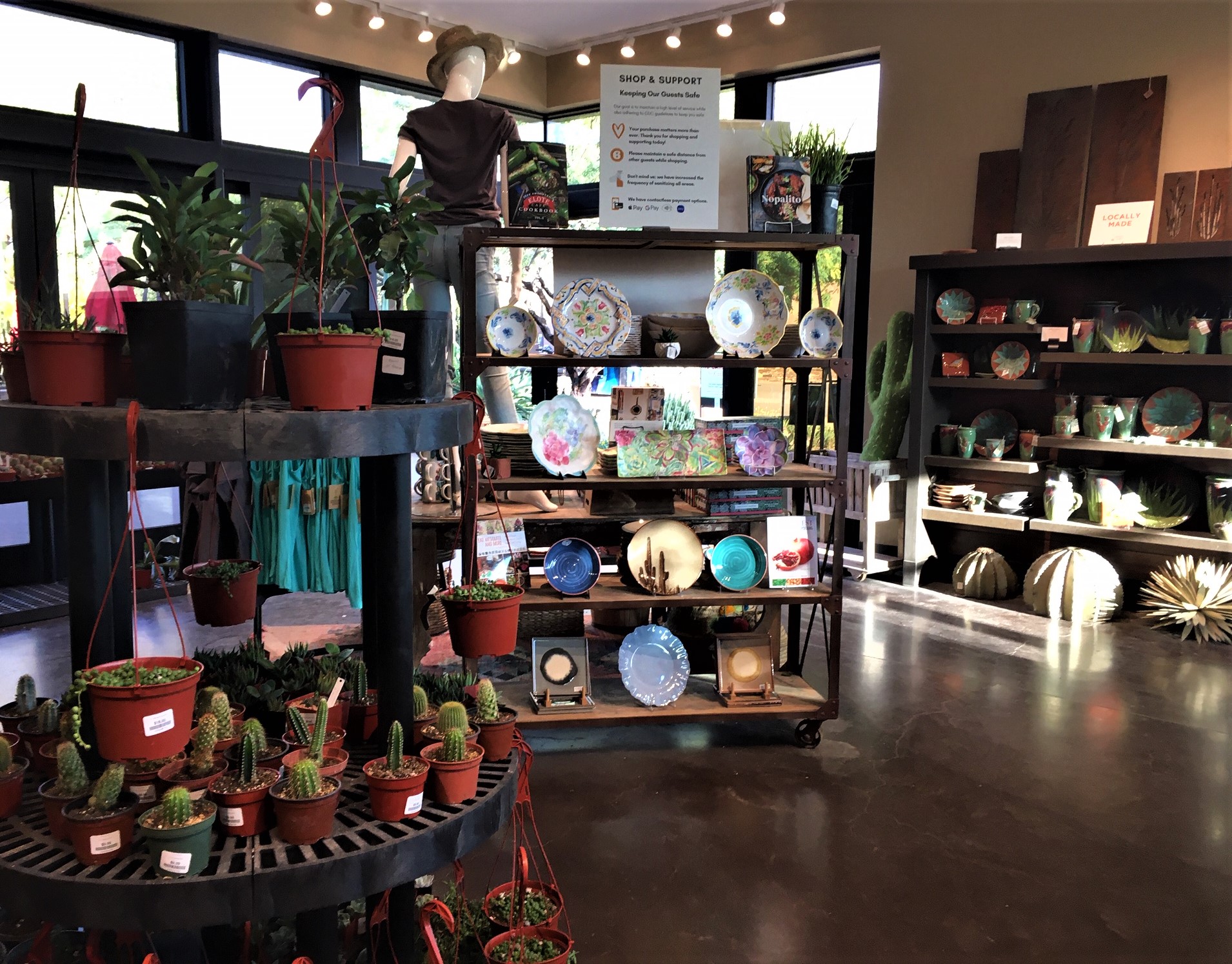

Next door to Gertrude’s is the Garden Shop which is another fun place to spend time. Not only do they really sell plants, but also clothing, jewelry, cookbooks and books about the flora and fauna of the desert. Of course, no gift shop would be complete without a selection of souvenir T-shirts and something for the youngsters as well.
You can visit the Desert Botanical Gardens all year long. Currently, you need a reservation which gives you a specific entrance time. This maintains social distancing. Masks are required around the gardens except when eating at Gertrude’s. You can purchase just a one-day ticket, but there are also many different levels of membership, all which include unlimited admission for yourself (and for most membership levels, for your children/grandchildren who are under 18) plus reciprocal admission to 300+ gardens, arboreta and conservatories around the United States. If you like gardens, I’d recommend you consider a yearly pass – even if you don’t live in Arizona.

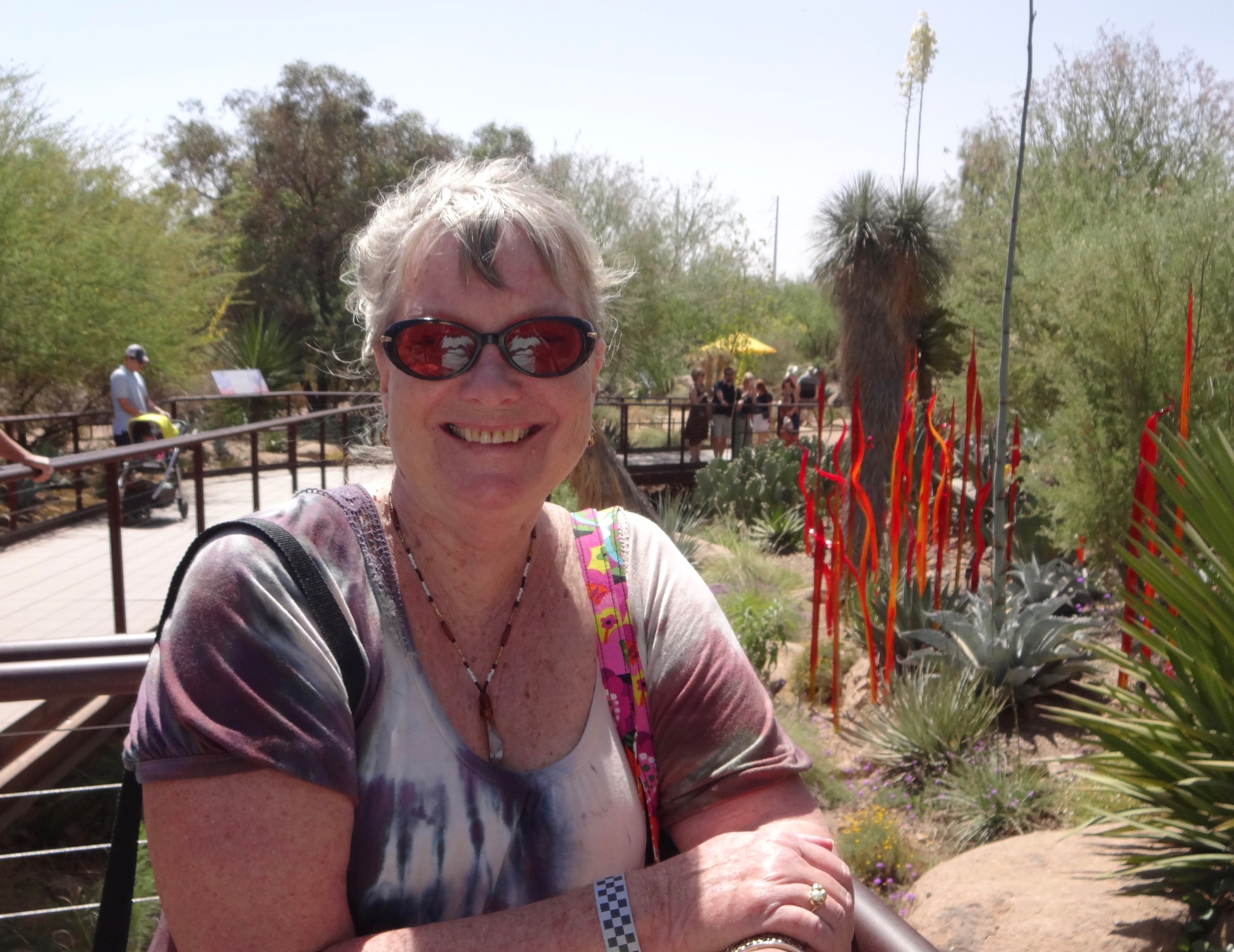
Every time I get to go to the gardens, there is something new and different to see. Desert Botanical Gardens has provided a “temporary home” to Chihuly glass on two occasions that I know of, and some of the pieces still stand amidst the cactus at the entrance. Spring brings “Music in the Garden” and fall is usually the time for ballet or theater. Winter is the season for Las Noches de las Luminarias when the Gardens reopen at night, all the paths are bordered by luminarias, and different garden venues host everything from Mariachis to Victorian Carolers to Native American music to modern jazz. Las Noches is an experience not to be missed – and probably an opportunity for a future blog.
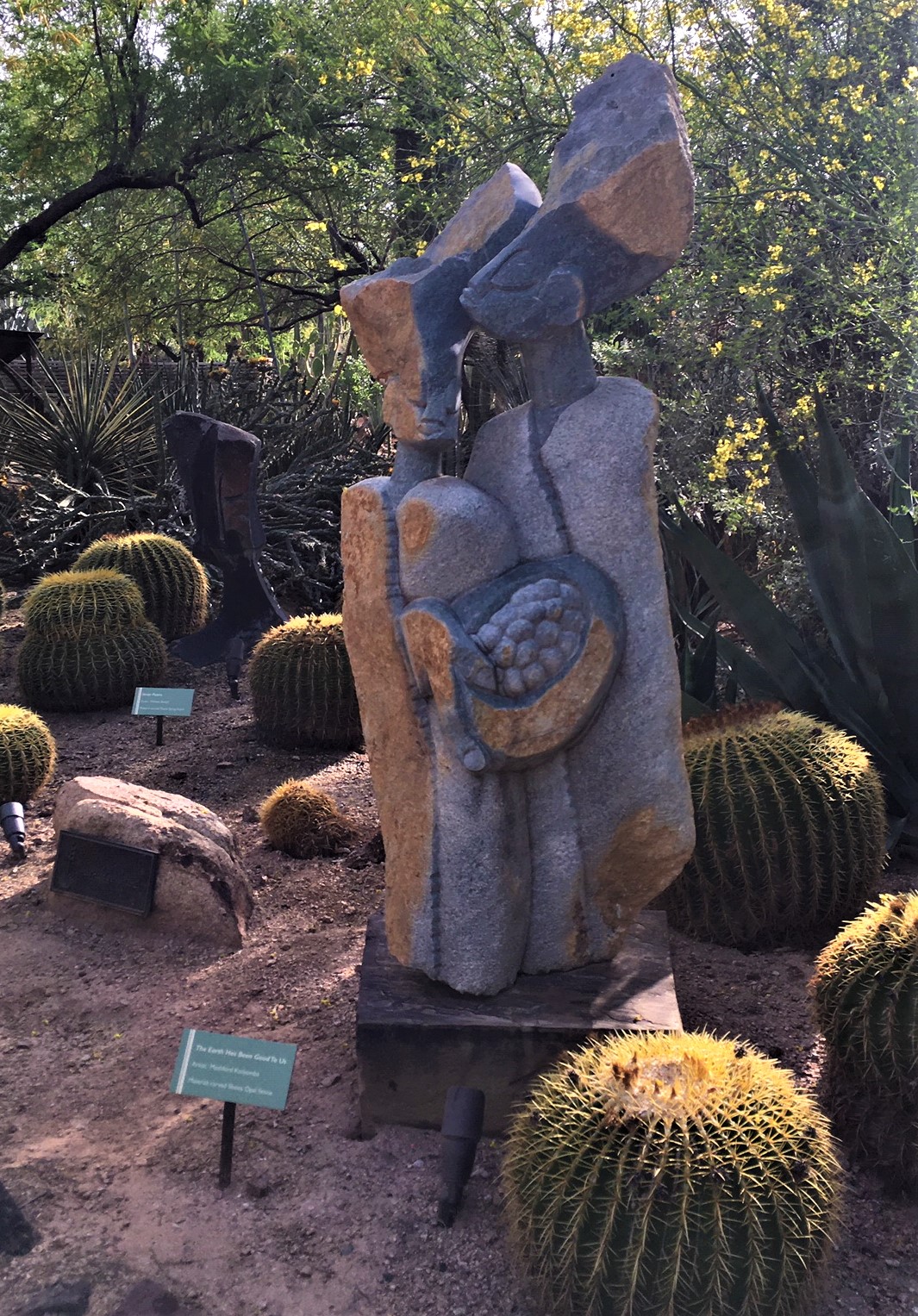
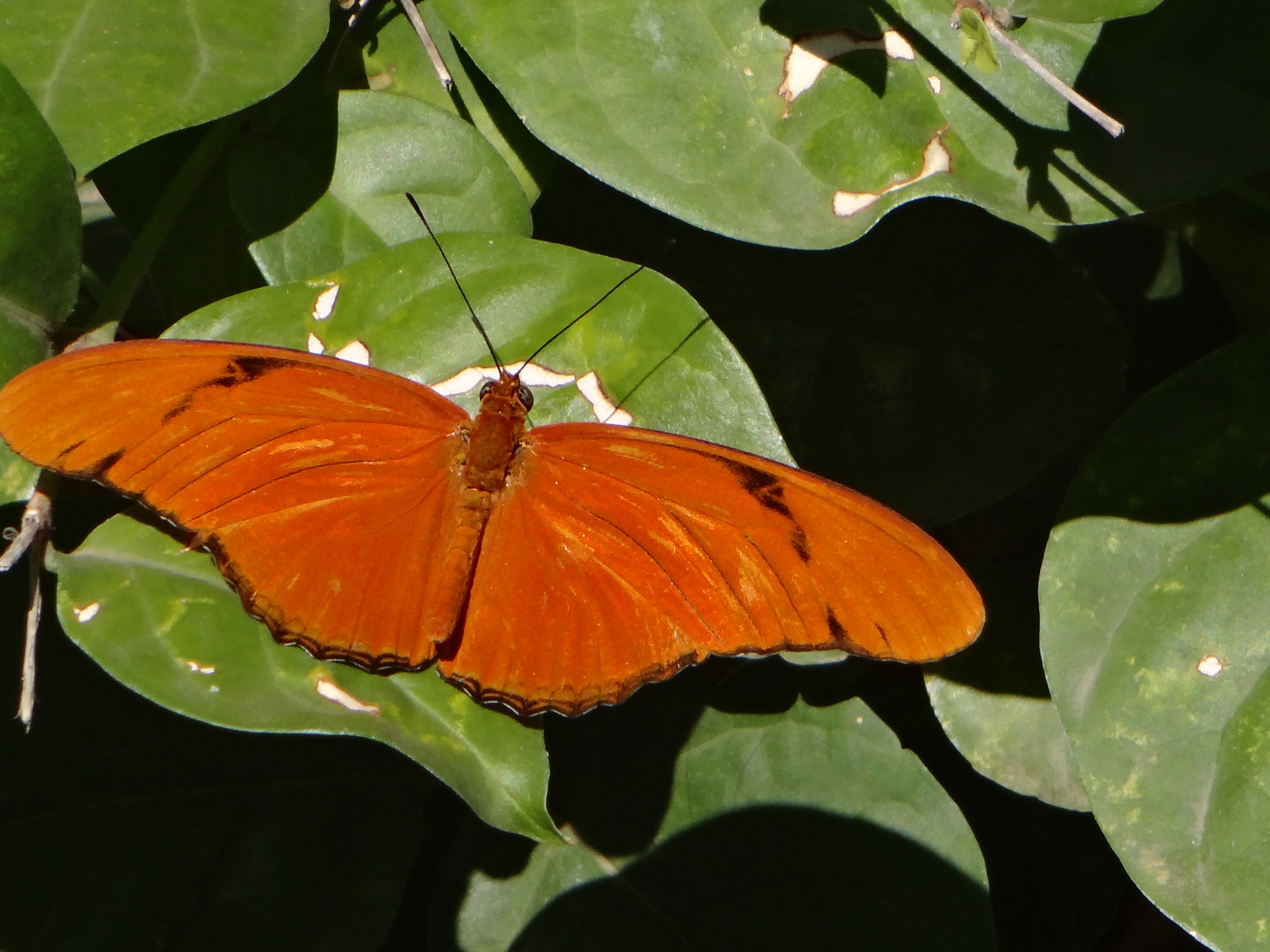

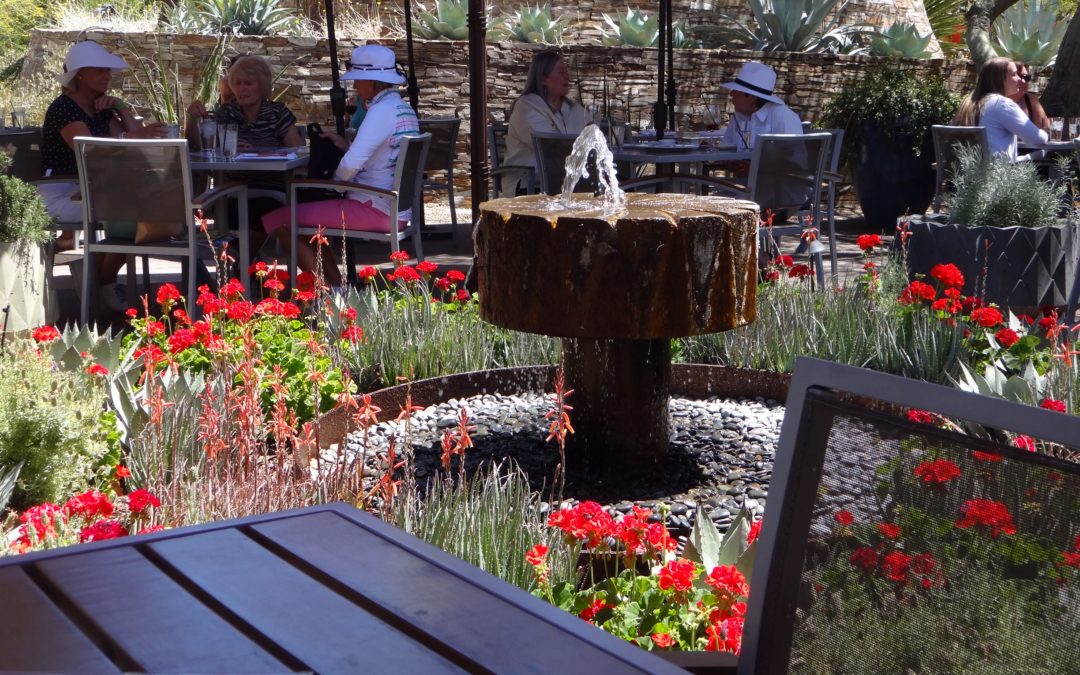
This is a wonderful review of the Garden! Thank you so much!!
Very interesting article. I had a wonderful time with you, Carolyne. Thank you for asking me to go with you.